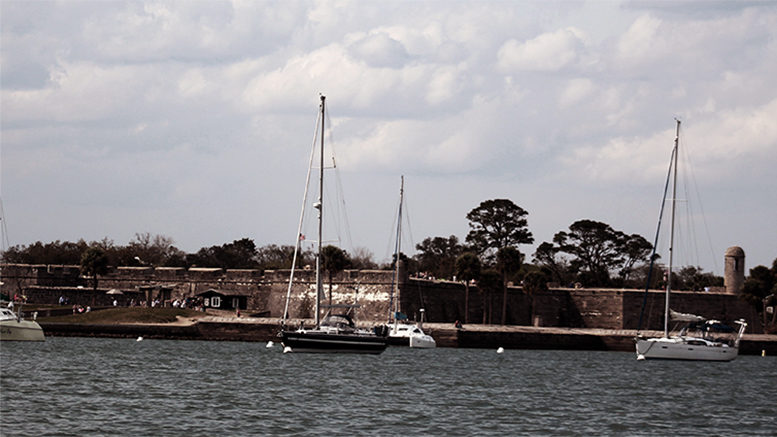By Sabrina Penton
As the oldest city in the United States, St. Augustine’s foundation is facing huge threats.
Prone to flooding because of low-lying areas and drainage issues, it doesn’t take much but a light rainfall to cause problems.
“We know if we have hurricanes, the water’s going to come over the flood wall. It just is. Our groundwater is only about three feet down,” said Dr. Leslee Keys, director of Historic Preservation at Flagler College. “We have water coming up and out of the soil. So even if we don’t have the water coming over the seawall, if we have rain, it’s going to come up.”
As the climate starts to shift, our winters have become warmer and our summers have grown hotter and muggier.
“We are experiencing accelerated sea-level rise that other parts of the country are not. This is a realization, that this is science-based, and we collectively as a world have to address the situation,” Keys said.
“We have thousands of barrier islands that have already gone underwater. We have whole countries that are preparing to disappear.”
In return we see our oceans rising faster than before. We continue to see more and more threats to St. Augustine.
As sea levels start to rise it’s not just a property threat, but also a danger to our environment, according to Barbara Blonder, professor of natural sciences at Flagler College.
“The biggest threat to the environment I think is a loss of biodiversity,” Blonder said.
“All the different plants and animals and little stuff, the microbes that are finding it hard to adapt to the changes in our climate, as they need to survive. And so that impacts us. That loss of biodiversity is our life support system.”
We are constantly being reminded of the negative impacts sea level rise has posed on St. Augustine, including destruction, erosion, wetland flooding, aquifer, and agricultural contamination and habitat loss for fish, birds, and plants.
As one of the fastest-growing counties in Florida, St. Johns is facing much greater threats to deal with.
Due to thousands of additional housing units approved, the county has a much bigger population problem to face, according to Dr. Keys.
In addition St. Augustine has a multi-billion dollar tourism industry.
“We have 50 to 60,000 people that come just to sit on the bayfront and watch fireworks,” said Keys.
However, the city is taking incremental actions and is currently talking about putting in a seven-foot seawall, part of what should be under water and part of what should be above to keep the tidal flooding out, according to Dr. Keys.
“We’re recognizing that regardless of political party, our governor is taking steps to address these issues” said Blonder.
“Our city government is taking steps to address these issues and we need to act, we need to act with good information, credible information, scientific information and we need to be able to adapt to these changes.”
St. Augustine is one of the most advanced cities in the state addressing sea level rise,according to the city commissioner Roxanne Horvath.
“We’re all working on it,” she said. All the commissioners have our own little areas that we’re working on, and it all comes together.”
In 2014 along the bayfront of St. Augustine the original seawall was improved and rebuilt from first being constructed in 1696.
Seawalls like in St. Augustine are designed to reduce flooding and prevent coastal erosion. But for the ancient city, It’s going to take much more than a sea wall to prevent the area from going under, residents and city officials agree.
We have to act locally, Blonder said. It’s the community members of St. Johns’s county responsibility to act sustainability.
“I want us to succeed. I know we can succeed. It’s going to be hard choices that we have to make. There’s no question about that. We will have to make some hard choices, but those choices will lead us down a path which will make us a better community overall,” Blonder said.



Be the first to comment on "The impacts of sea level rise on America’s Oldest City"